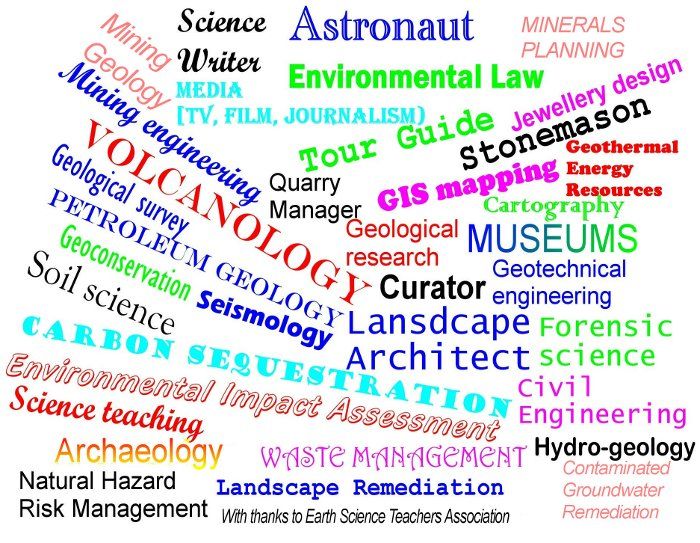Geodiversity
Recording, conserving and promoting the landscape and rocks of the Sheffield region
Geodiversity
Thirteen reasons why geodiversity is important to you
Geodiversity is a word used to describe all of the variation in the Earth's rocks, minerals, fossils, soils and landscapes as well as the natural forces that affect them - like rivers and weather. In the Sheffield area there are many reasons why geodiversity is important to you.
- Almost every part of the walls, windows, roof and floors of your house comes from the rocks and minerals underground. Even the paint has a lot of minerals in it. The walls and roofs of many of the older houses, important buildings and churches in your area are made from natural stone.
- Most of the things you have inside your house also are made from raw materials from underground. Plastic is made from oil, electrical wires are made from metal. So this list includes your phone, ipod and TV, as well as your fridge and car. And the petrol. Even toothpaste has a lot of limestone in it, cleaned up and crushed to a powder, of course. The chemicals for lots of drugs come from geological sources too.
- Most of your energy still comes from geological sources: coal, oil, gas, and nuclear electricity, but not wind, or solar power as these are not classed as geological. Even so, the materials needed to make the windmills and the solar panels are mined from the Earth.
- Soils are weathered from the minerals in rock over long periods of time. Soils provide homes for worms and other animals. Soils also grow your food. Plants, as well as being eaten as food for herbivorous animals, like cows, also provide food for carnivorous animals that eat the others.
- Trees provide you with paper; other plants provide you with fibre and oil, as well as habitats for wild animals and birds. Plants also help control the composition of the soil and atmosphere by exchanging carbon and oxygen through the pores in their green leaves.
- You, like all humans, are made up mainly of elements of hydrogen, oxygen and carbon, plus small amounts of other, very important elements, which keep you healthy, like calcium, potassium, magnesium, iron (and others). We get most of these elements from our food, and when we die we recycle our atoms back into the soil and atmosphere. This means our atoms inside our bodies have been around on planet Earth for a very long time, even though we each live for less than a hundred years. Just think: some of your carbon atoms might have been part of a cabbage last week, a dinosaur about 200 million years ago, a tree-fern, about 300 million years ago, a shellfish 400 million years ago, and a trilobite about 500 million years ago. Where will your atoms be in another million year's time?
- Your landscape looks the way it does because of the way the weather and rivers have shaped the layers of rock underneath. Even the slope of the roads are influenced by the slope of the rocks underneath. In our area steep hills tend to face westwards, whilst the east side of hills tend to slope more gently.
- Rivers, lakes and ponds carry rain water from the hills to the sea, as well as providing habitats for fish, newts, aquatic insects, frogs etc.
- The variation in geology also creates places that are best for different uses. Gently sloping areas for growing crops; slightly higher places for building towns and villages above river flood levels; places that are good for digging out coal, stone, limestone, iron ore and clay - to make bricks and pipes; upland areas like the Peak District National Park; good places for fishing ponds, wildlife sites (like Old Moor), industrial estates and peaceful places to walk or ride bikes.
- Roads and motorways are made from tarmac which comes from oil, from underground oil wells. Underneath the black layer of the road is a base of crushed rock. Even the route along which they were built can be influenced by the landscape.
- Geological sites in our area can be used for secondary and primary education as well as Higher Education. Since the year 2000, about a dozen sites in Barnsley M.B. alone have been used for geological research into plants and river landscapes from Carboniferous times, 310 million years ago.
- Knowing about Geodiversity can help in sorting out problems that can blight your landscape, like red ochre flowing from old coal mines, and reclaiming old industrial sites like pit tips, and coking plants.
- As well as helping you understand the world you live in, an education in geology can provide qualifications for a wide variety of jobs and give you a chance to work in many places across the world. This is a short list of career paths that can benefit from an education in Geology. It is based on work done by the Earth Science Teacher's Association.

email: sageologytrust@gmail.com
Copyright: Sheffield Area Geology Trust. Registered Charity No. 1133465, England
